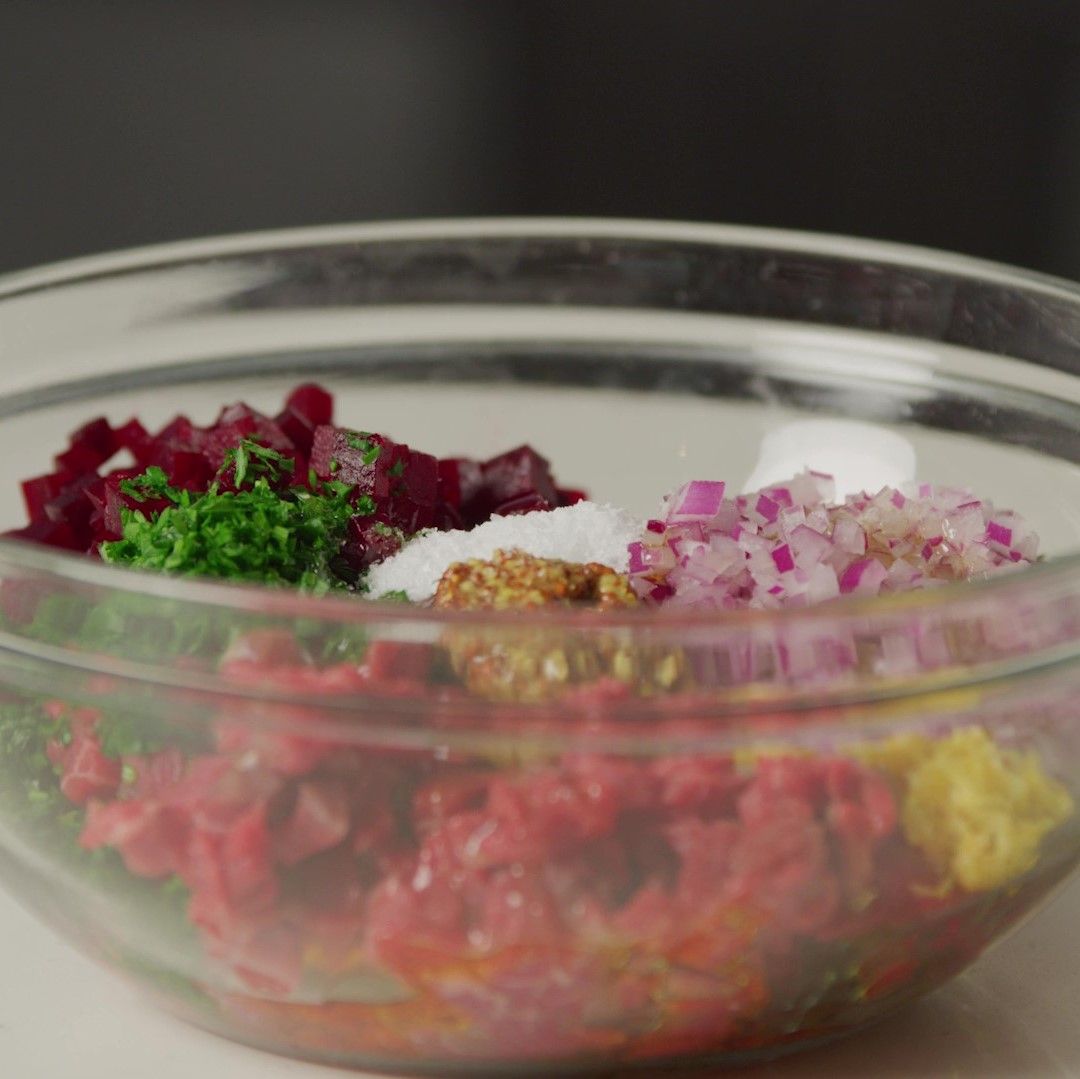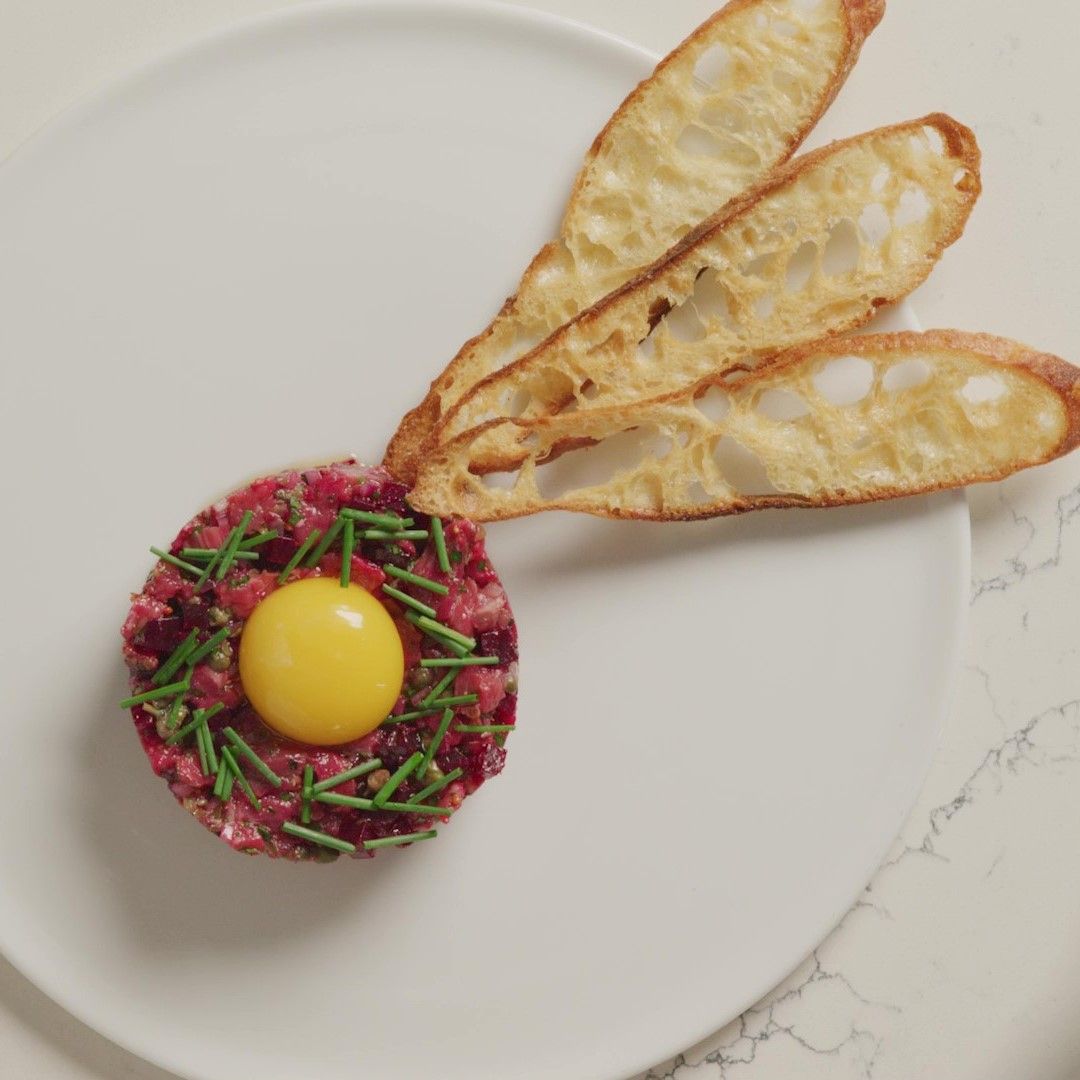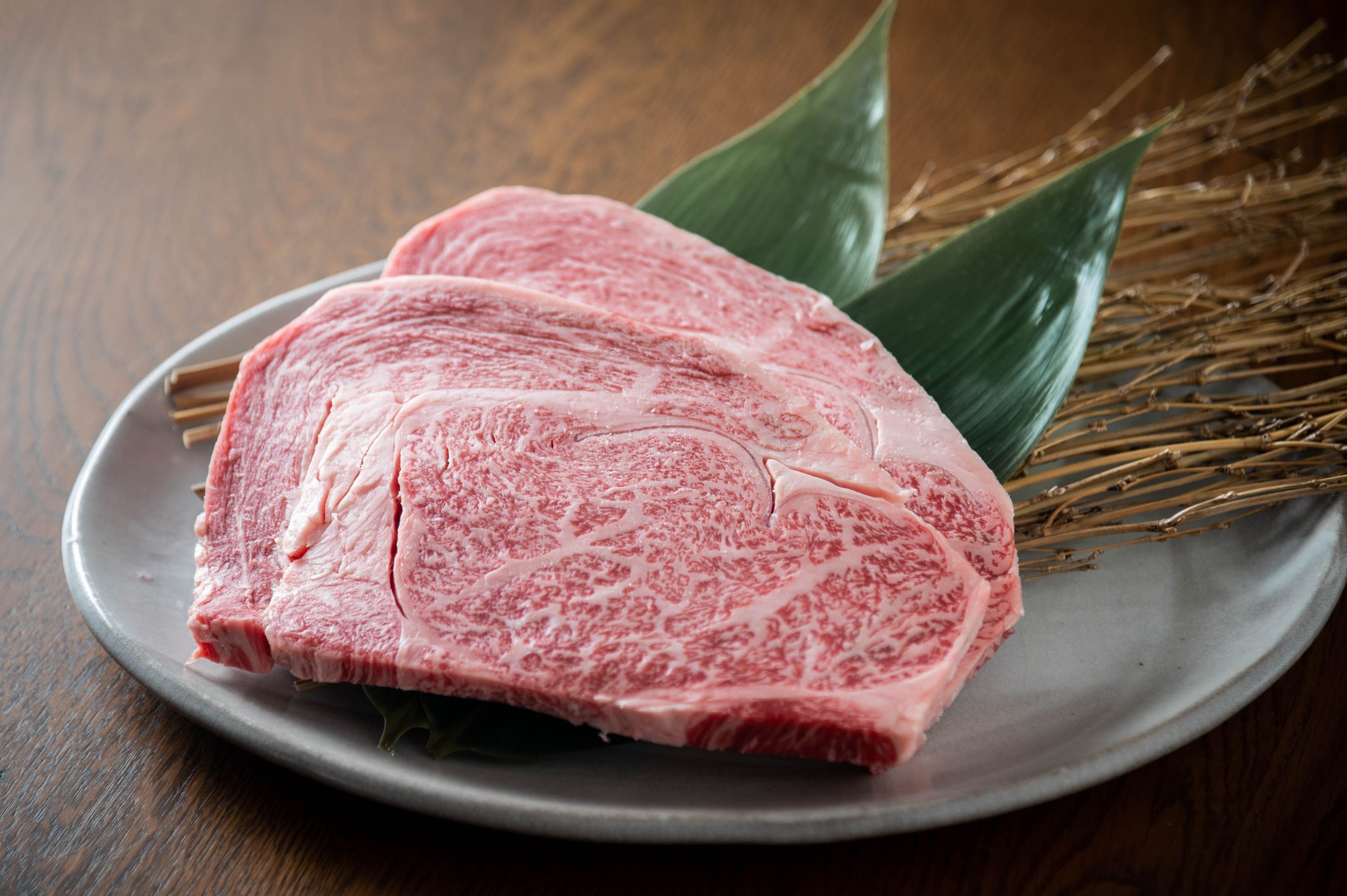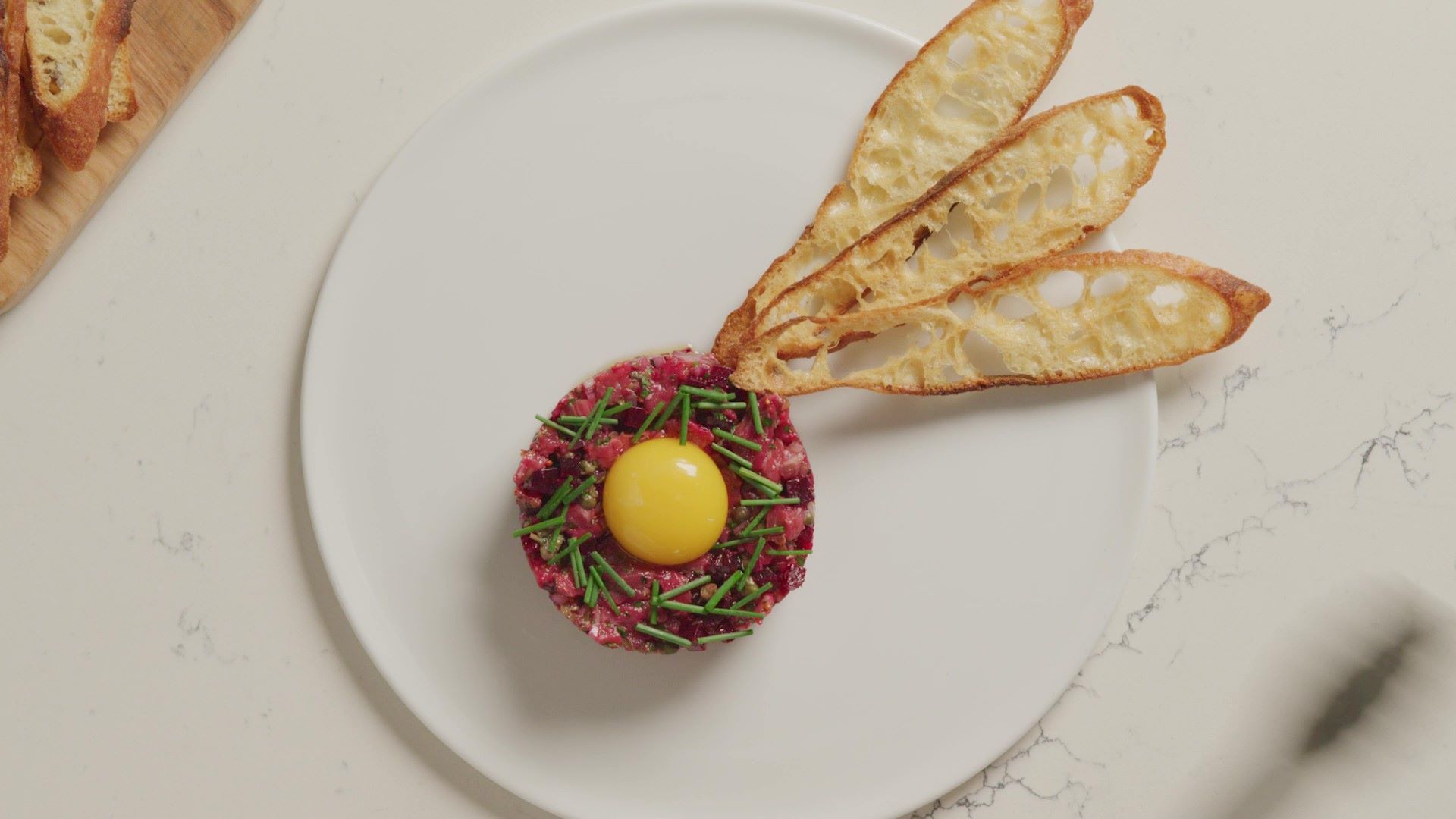Beet and beef tartar
| Wagyu beef tenderloin, small dice | 8 oz(230g) |
| Red beets, roasted, peeled, small dice | 8 oz(230g) |
| Capers, rinsed, chopped | 1/4 cup |
| Red Onion, minced | 1/4 cup |
| Whole grain Dijon mustard | 1 Tbsp. |
| Lemon Zest | 1 tsp |
| Parsley, minced | 2 tsp |
| Extra Virgin Olive Oil | 1/4 cup |
| Salt | 1 tsp |
| Ground black pepper | 1/4 tsp |
For toppings
| Egg Yolks | 4 |
| Extra Virgin Olive Oil | 2 Tbsp |
| Chives, cut to ½ inch length | about 1/4 cup |
| Toasted bread rounds, in about ¼ inch thick | 12 |
Beets combined with Wagyu beef tartar. The tender texture of the Wagyu beef is mixed with crunchy, crispy, salty, and spicy flavors to create a dish that offers the tenderness and umami of Wagyu beef.
Note: Raw meat should be kept cold at all times, and should be enjoyed as fresh as possible. Cut raw meat on a separate, clean, non-wood cutting board.
How to make it
-

Combine all the tartar ingredients in a bowl.
-

Divide the mixture into four equal portions and press each portion into a 4-inch round mold on each serving plate.
-

Top each with an egg yolk, drizzle with olive oil, and garnish with chives. Serve with toasted bread.

https://www.ciachef.edu/
Founded in 1946, The Culinary Institute of America is the world’s premier culinary college. Dedicated to developing leaders in foodservice and hospitality, the independent, not-for-profit CIA offers master’s, bachelor’s, and associate degrees with majors in culinary arts, baking and pastry arts, food business management, hospitality management, culinary science, and applied food studies. The college also offers executive education, certificate programs, and courses for professionals and enthusiasts. Its conferences, leadership initiatives, and consulting services have made the CIA the think tank of the food industry and its worldwide network of more than 50,000 alumni includes innovators in every area of the food world. The CIA has locations in New York, California, Texas, and Singapore.

Japanese Wagyu beef is said to be characterized by its texture, which is brought about by the fine sashi and tender lean meat, its concentrated flavor, and its sweet, full-bodied aroma, making it one of Japan's representative livestock products.

